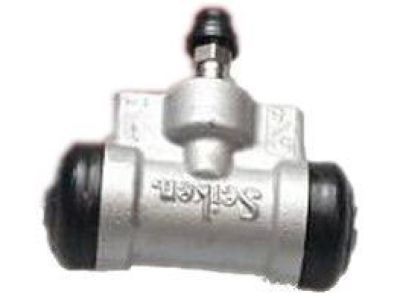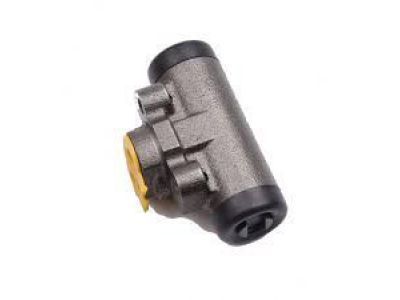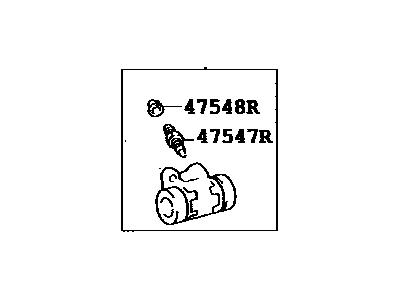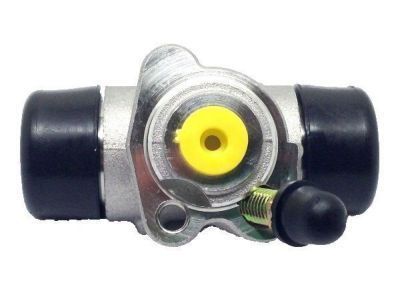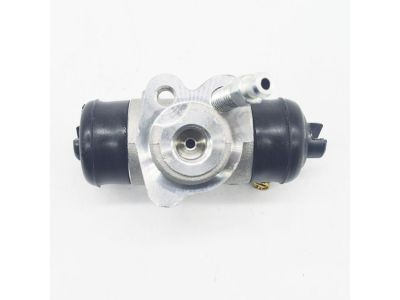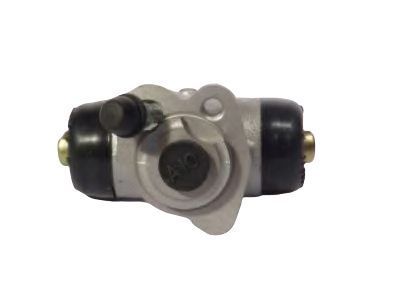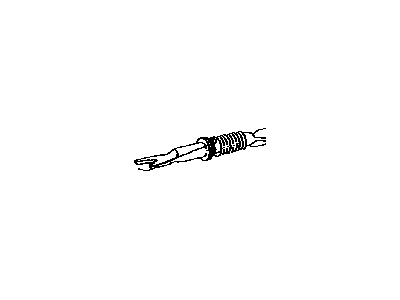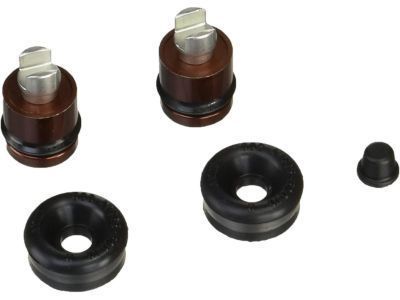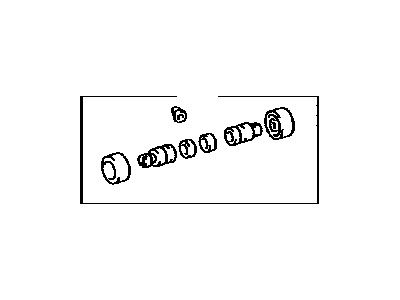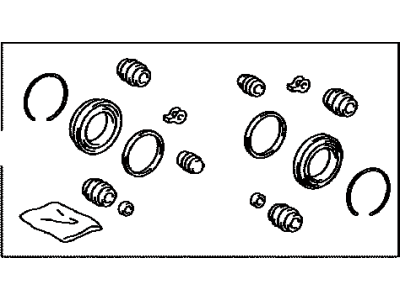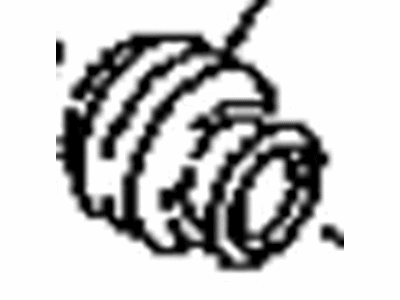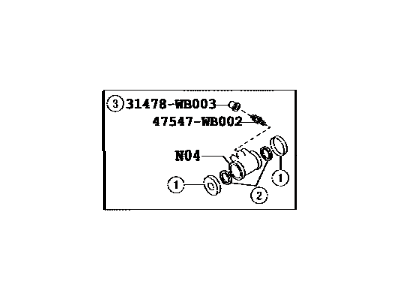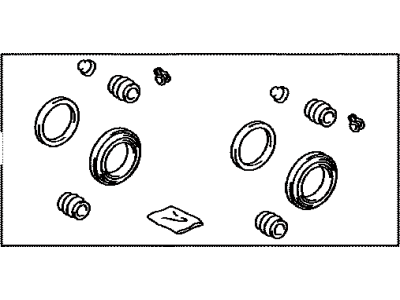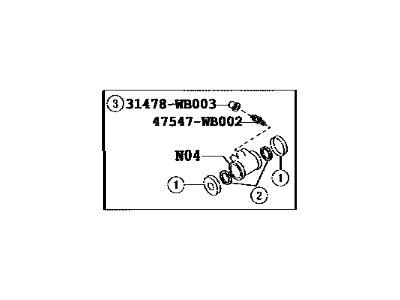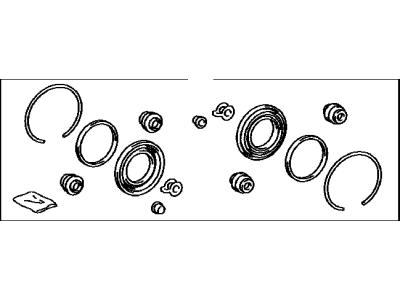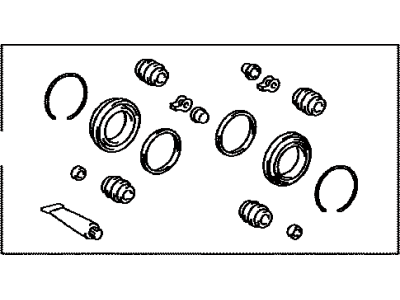

My Garage
My Account
Cart
Genuine Toyota Yaris Wheel Cylinder
Brake Wheel Cylinder- Select Vehicle by Model
- Select Vehicle by VIN
Select Vehicle by Model
orMake
Model
Year
Select Vehicle by VIN
For the most accurate results, select vehicle by your VIN (Vehicle Identification Number).
10 Wheel Cylinders found
Toyota Yaris Rear Wheel Brake Cylinder Assembly
Part Number: 47550-20211$39.26 MSRP: $54.87You Save: $15.61 (29%)Ships in 1-3 Business DaysToyota Yaris Rear Wheel Brake Cylinder Assembly
Part Number: 47570-20101$48.54 MSRP: $67.85You Save: $19.31 (29%)Ships in 1-3 Business DaysToyota Yaris Cylinder Kit, Rear Wheel
Part Number: 04474-52020$28.91 MSRP: $40.40You Save: $11.49 (29%)Ships in 1-3 Business DaysToyota Yaris Front Disc Brake Cylinder Kit
Part Number: 04478-52070$29.02 MSRP: $40.57You Save: $11.55 (29%)Ships in 1-3 Business DaysToyota Yaris Cylinder Kit, Front Dis
Part Number: 04478-WB001$25.93 MSRP: $36.25You Save: $10.32 (29%)Ships in 1-3 Business DaysToyota Yaris Cylinder Assembly, Wheel
Part Number: 47550-WB001$109.82 MSRP: $154.81You Save: $44.99 (30%)Ships in 1-3 Business DaysToyota Yaris Cylinder Kit, Rear Dis
Part Number: 04479-52170$29.52 MSRP: $41.27You Save: $11.75 (29%)Ships in 1-3 Business DaysToyota Yaris Cylinder Assembly, Wheel
Part Number: 47550-WB002$43.55 MSRP: $60.88You Save: $17.33 (29%)Ships in 1-3 Business DaysToyota Yaris Cylinder Kit, Front Dis
Part Number: 04478-12120$33.46 MSRP: $46.77You Save: $13.31 (29%)Ships in 1-3 Business DaysToyota Yaris Cylinder Kit, Front Dis
Part Number: 04478-52100$33.90 MSRP: $47.39You Save: $13.49 (29%)
Toyota Yaris Wheel Cylinder
If you are in demand for superior quality and affordable OEM Toyota Yaris Wheel Cylinder, then shop with us! We own a wide range of the reduced-priced genuine Toyota Yaris Wheel Cylinder. You can purchase in confidence as all parts come with a manufacturer's warranty. Any issues with our products? No need to worry as we have a hassle-free return policy to guide you every step of the way.
Toyota Yaris Wheel Cylinder Parts Questions & Experts Answers
- Q: How to remove and overhaul Wheel Cylinder on Toyota Yaris?A:If due to fluid leakage of wheel cylinder the brake shoes get contaminated then they must be renewed on this side as well as on the other side also regardless of the fact that only one side is burnt. To initiate the process of removal, remove the Brake Drum and rub the wheel cylinder seals against the wheel; if accompanied with brake dust, then it implies a leakage, while dampness implies a faulty cylinder. Albeit that wheel cylinder repair kits are not as easily obtainable, it may be wise to ask in respect to them. Also, in the event that one cylinder was ailing, the next one could also be affected, and if so, the leak could have developed to affect the brake shoes in the process and therefore, both necessitating new shoes. To reduce the loss of the brake fluid, it is recommended that you unscrew the master cylinder reservoir cap and put the cap and the cover in a polythene or clamp the flexible hose near the wheel cylinder. Fully extend the brake shoes at the top part to free the bottom part of the wheel cylinder, and by so doing be able to hold it by the automatic adjuster in preparation for the withdrawal. Wash the surrounding area of the hydraulic union situated at the rear of the wheel cylinder, you are then required to undo the union nut, which can be very much tightened; you can therefore smear some penetrating oil before undoing the nut. Remove the bolt that fastens the wheel cylinder to the back plate to detach the latter, and cap off the hydraulic unions to minimize issue of dirt and fluid leakage. At the present time, holing service procedures or parts are not offered, which means it is best to replace the wheel cylinder as an assembly. For refitting clean the backplate remove the plug from the hydralulic pipe and place the cylinder onto the backplate while turning the hydraulic union nut by hand. After applying the pressure, apply the nut of the hydraulic union and tighten up the mounting bolt completely. Pull out the automatic brake adjuster in order to bring the brake shoes in contact with the wheel cylinder pistons and if any clamp or any seal was applied to reduce the amount of expelled fluid, then it should be removed. Repair or replace the brake drum and flush the hydraulic system and if measures were taken to avoid loss of the fluid only the rear brake requires bleeding. Finally, check the brake before taking the car back to its normal use.
